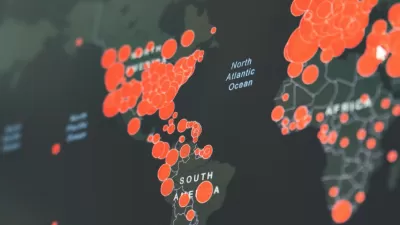In his new book, Jack Dangermond explores the transformative impact of GIS technology in solving global challenges through spatial data, highlighting its widespread application across sectors and its potential to design sustainable futures.

In The Power of Where, Jack Dangermond, cofounder of Esri, explores the transformative potential of Geographic Information Systems (GIS) technology to address some of the world’s most pressing challenges. The book introduces readers to the geographic approach, which uses spatial data to uncover patterns and provide solutions in areas like climate change, food production, urban planning, and wildlife migration. Through a series of engaging visuals, maps, and real-life stories, Dangermond demonstrates how GIS has become an integral part of everyday life—from managing city infrastructures to conserving natural spaces.
Central to the book is the concept of the geographic approach, which emphasizes spatial thinking as a tool for problem-solving. Dangermond highlights the power of GIS to visualize, analyze, and collaborate on global issues, drawing from his six decades of experience in the field. He emphasizes that GIS technology is already embedded in many sectors, helping with logistics, resource management, and environmental conservation. The book also offers a hands-on experience through a companion website, bringing the technology to life for students, educators, and aspiring GIS users.
Dangermond's narrative also addresses the role of emerging technologies—such as artificial intelligence, 3D visualization, and mobile devices—in enhancing GIS capabilities. With examples from various sectors, the book demonstrates how GIS empowers communities to design sustainable futures. Throughout the text, Dangermond conveys his passion for the power of place and highlights how spatial thinking can bridge human ingenuity with geographic solutions.
FULL STORY: The Power of Where: A Geographic Approach to the World's Greatest Challenges

Alabama: Trump Terminates Settlements for Black Communities Harmed By Raw Sewage
Trump deemed the landmark civil rights agreement “illegal DEI and environmental justice policy.”

Study: Maui’s Plan to Convert Vacation Rentals to Long-Term Housing Could Cause Nearly $1 Billion Economic Loss
The plan would reduce visitor accommodation by 25% resulting in 1,900 jobs lost.

Why Should We Subsidize Public Transportation?
Many public transit agencies face financial stress due to rising costs, declining fare revenue, and declining subsidies. Transit advocates must provide a strong business case for increasing public transit funding.

Paris Bike Boom Leads to Steep Drop in Air Pollution
The French city’s air quality has improved dramatically in the past 20 years, coinciding with a growth in cycling.

Why Housing Costs More to Build in California Than in Texas
Hard costs like labor and materials combined with ‘soft’ costs such as permitting make building in the San Francisco Bay Area almost three times as costly as in Texas cities.

San Diego County Sees a Rise in Urban Coyotes
San Diego County experiences a rise in urban coyotes, as sightings become prevalent throughout its urban neighbourhoods and surrounding areas.
Urban Design for Planners 1: Software Tools
This six-course series explores essential urban design concepts using open source software and equips planners with the tools they need to participate fully in the urban design process.
Planning for Universal Design
Learn the tools for implementing Universal Design in planning regulations.
Smith Gee Studio
Alamo Area Metropolitan Planning Organization
City of Santa Clarita
Institute for Housing and Urban Development Studies (IHS)
City of Grandview
Harvard GSD Executive Education
Toledo-Lucas County Plan Commissions
Salt Lake City
NYU Wagner Graduate School of Public Service





























